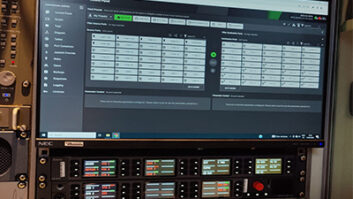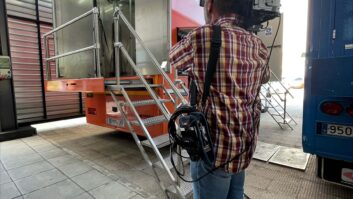RTVE and Telefónica have completed an innovation pilot that makes it possible to replace live TV trucks with a simple connection to Telefónica’s edge capabilities.
A soundtrack was streamed from the Cineteca de Matadero Madrid using edge computing technology to provide real-time bandwidth and a low latency of between 3-5 milliseconds, elements that will be required by 8K video, virtual and augmented reality, or robotics that will become widespread with the advent of 5G.
Three cameras, connected to Telefónica’s edge capabilities through its current fibre network from Matadero, captured the experience in-situ while a technical team was in charge of the production from the RTVE facilities in Torrespaña (Madrid) using a remote interface for content production, avoiding the displacement of a live TV truck and the production team to Matadero.
“This is the fourth edge computing based service we are testing this year and the first in which broadcasting and telecommunications technologies converge,” said David del Val, director of product innovation at Telefónica. “The range of possibilities that this new service opens up is enormous, and we are very pleased that RTVE was the first television network to see the transformative potential that this technology has for television production.”
“For a public broadcaster like RTVE it is very important to participate in this European project together with a technological partner like Telefónica, because we are testing emerging technologies that will undoubtedly open the door to new, more agile and powerful ways of producing content to offer viewers,” added Pere Vila, director of technological strategy and digital innovation at RTVE.






